-
 Bitcoin
Bitcoin $108000
-1.29% -
 Ethereum
Ethereum $4411
-1.05% -
 Tether USDt
Tether USDt $1.000
0.00% -
 XRP
XRP $2.763
-3.43% -
 BNB
BNB $862.8
-0.04% -
 Solana
Solana $201.0
-2.60% -
 USDC
USDC $0.9999
0.00% -
 TRON
TRON $0.3403
-0.20% -
 Dogecoin
Dogecoin $0.2127
-2.82% -
 Cardano
Cardano $0.8093
-3.19% -
 Chainlink
Chainlink $23.27
-1.87% -
 Hyperliquid
Hyperliquid $44.76
-0.05% -
 Ethena USDe
Ethena USDe $1.001
0.02% -
 Sui
Sui $3.233
-3.15% -
 Stellar
Stellar $0.3508
-3.59% -
 Bitcoin Cash
Bitcoin Cash $540.0
-2.23% -
 Avalanche
Avalanche $23.38
-2.61% -
 Cronos
Cronos $0.2794
-7.60% -
 Hedera
Hedera $0.2155
-5.59% -
 UNUS SED LEO
UNUS SED LEO $9.622
0.37% -
 Litecoin
Litecoin $109.0
-2.26% -
 Toncoin
Toncoin $3.145
-0.01% -
 Shiba Inu
Shiba Inu $0.00001214
-2.72% -
 Polkadot
Polkadot $3.736
-3.39% -
 Uniswap
Uniswap $9.537
-3.15% -
 Dai
Dai $0.9998
-0.01% -
 Bitget Token
Bitget Token $4.527
-1.11% -
 Monero
Monero $262.4
0.57% -
 Aave
Aave $314.7
-1.98% -
 Ethena
Ethena $0.6445
-3.23%
How to withdraw crypto on Binance
Withdrawing crypto from Binance involves selecting the cryptocurrency, entering the correct wallet address, and considering withdrawal fees and security measures.
Apr 06, 2025 at 06:00 am
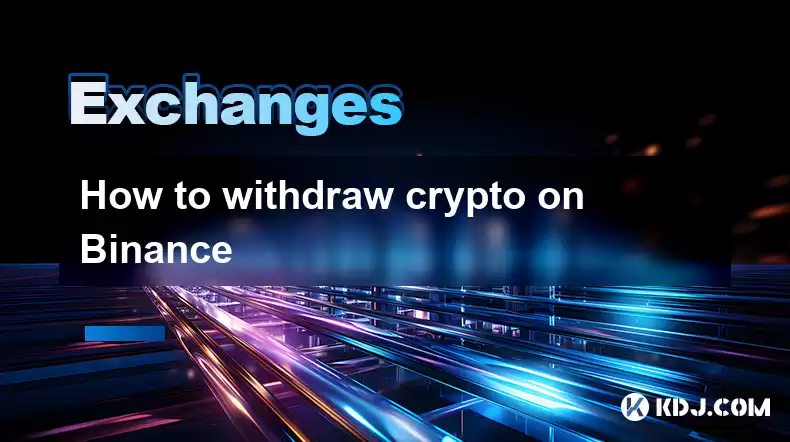
Withdrawing cryptocurrency from Binance is a straightforward process that allows users to transfer their digital assets to other wallets or exchanges. To ensure a smooth experience, it's essential to understand the steps involved and the necessary precautions to take. Binance supports a wide range of cryptocurrencies, and the withdrawal process may vary slightly depending on the specific coin or token. In this guide, we'll walk you through the process of withdrawing crypto on Binance, covering the key steps, fees, and important considerations to keep in mind.
Preparing for Withdrawal
Before initiating a withdrawal on Binance, there are a few essential preparations to make. First, ensure that you have a secure external wallet ready to receive the cryptocurrency. This could be a hardware wallet, a software wallet, or another exchange account. It's crucial to double-check the wallet address to avoid sending funds to the wrong destination. Additionally, make sure you have enough of the cryptocurrency you wish to withdraw in your Binance account, as well as a sufficient balance to cover any withdrawal fees.
Logging into Your Binance Account
To begin the withdrawal process, start by logging into your Binance account. Navigate to the official Binance website and enter your login credentials. If you have enabled two-factor authentication (2FA), you'll need to provide the authentication code as an additional security measure. Once logged in, you'll be directed to your account dashboard, where you can access various features, including the withdrawal section.
Navigating to the Withdrawal Section
From your Binance account dashboard, locate and click on the 'Wallet' tab in the top navigation menu. This will open a dropdown menu with several options. Select 'Withdraw' from the list to proceed to the withdrawal page. On this page, you'll see a list of cryptocurrencies supported by Binance for withdrawal. Use the search function or scroll through the list to find the specific cryptocurrency you want to withdraw.
Selecting the Cryptocurrency and Network
Once you've located the cryptocurrency you wish to withdraw, click on it to proceed. Binance may offer multiple network options for certain cryptocurrencies, such as Bitcoin (BTC) or Ethereum (ETH). Carefully select the appropriate network for your withdrawal, as sending to an incompatible network can result in the loss of funds. For example, if you're withdrawing ETH, you may have options like ERC20 or BEP20. Choose the network that matches your receiving wallet's compatibility.
Entering the Withdrawal Address
After selecting the cryptocurrency and network, you'll be prompted to enter the withdrawal address. This is the address of the external wallet where you want to send your cryptocurrency. Double-check the address to ensure it's correct, as sending to the wrong address can result in permanent loss of funds. Some cryptocurrencies may also require a memo or tag, which is an additional identifier for the transaction. If applicable, enter the correct memo or tag provided by your receiving wallet.
Specifying the Withdrawal Amount
Next, you'll need to specify the amount of cryptocurrency you want to withdraw. Enter the desired amount in the designated field. Keep in mind that Binance may have minimum and maximum withdrawal limits for each cryptocurrency, so ensure your amount falls within these limits. Additionally, consider the withdrawal fees associated with the transaction, as these will be deducted from the total amount you're withdrawing. Binance displays the estimated fee for your withdrawal, so factor this into your calculation.
Reviewing and Confirming the Withdrawal
Before finalizing the withdrawal, take a moment to review all the details you've entered. Double-check the withdrawal address, network, amount, and any memo or tag. If everything appears correct, click on the 'Submit' or 'Withdraw' button to proceed. Binance may prompt you to enter your 2FA code again as an additional security measure. Once you've confirmed the withdrawal, the transaction will be processed by Binance's system.
Monitoring the Withdrawal Status
After submitting your withdrawal request, you can monitor its status within your Binance account. Navigate to the 'Transaction History' or 'Withdrawal History' section to view the progress of your withdrawal. The status may show as 'Processing,' 'Pending,' or 'Completed,' depending on the stage of the transaction. Keep in mind that withdrawal processing times can vary depending on the cryptocurrency and network congestion. It's essential to be patient and allow sufficient time for the transaction to be confirmed on the blockchain.
Understanding Withdrawal Fees
Binance charges withdrawal fees for each cryptocurrency transaction, and these fees can vary depending on the specific coin or token. The fees are typically displayed on the withdrawal page before you confirm the transaction. It's important to factor in these fees when calculating the amount you want to withdraw, as they will be deducted from the total amount sent to your external wallet. Some cryptocurrencies may have higher withdrawal fees than others, so it's worth comparing the fees across different assets if you have the option to choose.
Security Considerations for Withdrawals
When withdrawing cryptocurrency from Binance, it's crucial to prioritize security to protect your funds. Always use a secure and trusted external wallet for receiving your withdrawn assets. Enable two-factor authentication (2FA) on your Binance account and any other wallets or exchanges you use. Be cautious of phishing attempts and never share your private keys or seed phrases with anyone. Additionally, consider using a hardware wallet for long-term storage of your cryptocurrency, as these devices offer an extra layer of security against online threats.
Common Issues and Troubleshooting
While the withdrawal process on Binance is generally smooth, you may encounter some common issues. If your withdrawal is taking longer than expected, check the transaction status in your Binance account and on the blockchain explorer for the specific cryptocurrency. Ensure that you've entered the correct withdrawal address and any required memo or tag. If you're experiencing issues with a specific cryptocurrency, check Binance's official announcements or support pages for any known problems or maintenance affecting withdrawals. If you need further assistance, you can reach out to Binance's customer support team for help.
Withdrawal Limits and Verification
Binance may impose withdrawal limits based on your account level and verification status. To access higher withdrawal limits, you may need to complete the necessary identity verification steps. These steps typically involve providing personal information and submitting identification documents. Once your account is verified, you'll be eligible for increased withdrawal limits. Keep in mind that withdrawal limits can vary depending on the cryptocurrency and may be subject to change based on Binance's policies. Always check the current limits before initiating a withdrawal to ensure you're within the allowed range.
Withdrawing to Other Exchanges
If you're looking to transfer your cryptocurrency from Binance to another exchange, the withdrawal process remains largely the same. However, you'll need to use the deposit address provided by the receiving exchange instead of a personal wallet address. Ensure that you select the correct network for the withdrawal, as different exchanges may support different networks for the same cryptocurrency. Once the withdrawal is processed and confirmed on the blockchain, the funds should appear in your account on the receiving exchange. Be aware that each exchange may have its own withdrawal and deposit policies, so familiarize yourself with their specific requirements.
Withdrawing Fiat Currency
While this guide focuses on withdrawing cryptocurrency, it's worth noting that Binance also offers the option to withdraw fiat currency in some regions. The process for withdrawing fiat is different from cryptocurrency withdrawals and may involve additional steps such as bank account verification and currency conversion. If you're interested in withdrawing fiat from Binance, consult the platform's specific guides and support resources for detailed instructions on the process, fees, and any applicable limits or requirements.
Best Practices for Withdrawing Crypto
To ensure a smooth and secure withdrawal experience on Binance, follow these best practices:
- Always double-check the withdrawal address and any required memo or tag before confirming the transaction.
- Use a secure and trusted external wallet for receiving your withdrawn cryptocurrency.
- Enable two-factor authentication (2FA) on your Binance account and any other wallets or exchanges you use.
- Keep your private keys and seed phrases secure and never share them with anyone.
- Be aware of the withdrawal fees and factor them into your calculations.
- Monitor the withdrawal status and allow sufficient time for the transaction to be confirmed on the blockchain.
- Stay informed about any known issues or maintenance affecting withdrawals on Binance.
- Consider using a hardware wallet for long-term storage of your cryptocurrency.
Common Questions Related to Withdrawing Crypto on Binance
Q: How long does it take to withdraw crypto from Binance?A: The withdrawal processing time on Binance can vary depending on the cryptocurrency and network congestion. Some withdrawals may be processed within minutes, while others may take several hours or even days to be confirmed on the blockchain. It's essential to monitor the withdrawal status and allow sufficient time for the transaction to complete.
Q: What are the withdrawal fees on Binance?A: Binance charges withdrawal fees for each cryptocurrency transaction, and these fees can vary depending on the specific coin or token. The fees are typically displayed on the withdrawal page before you confirm the transaction. It's important to factor in these fees when calculating the amount you want to withdraw, as they will be deducted from the total amount sent to your external wallet.
Q: Can I withdraw crypto to any wallet address?A: You can withdraw cryptocurrency to any compatible wallet address that supports the specific coin or token you're withdrawing. However, it's crucial to double-check the address and ensure it's correct before confirming the withdrawal. Sending to an incompatible or incorrect address can result in the permanent loss of funds.
Q: What should I do if my withdrawal is taking too long?A: If your withdrawal is taking longer than expected, first check the transaction status in your Binance account and on the blockchain explorer for the specific cryptocurrency. Ensure that you've entered the correct withdrawal address and any required memo or tag. If the issue persists, consult Binance's official announcements or support pages for any known problems or maintenance affecting withdrawals. If necessary, reach out to Binance's customer support team for further assistance.
Q: Are there any withdrawal limits on Binance?A: Yes, Binance may impose withdrawal limits based on your account level and verification status. To access higher withdrawal limits, you may need to complete the necessary identity verification steps. Withdrawal limits can vary depending on the cryptocurrency and may be subject to change based on Binance's policies. Always check the current limits before initiating a withdrawal to ensure you're within the allowed range.
Disclaimer:info@kdj.com
The information provided is not trading advice. kdj.com does not assume any responsibility for any investments made based on the information provided in this article. Cryptocurrencies are highly volatile and it is highly recommended that you invest with caution after thorough research!
If you believe that the content used on this website infringes your copyright, please contact us immediately (info@kdj.com) and we will delete it promptly.
- Memecoins September 2025 Watchlist: What's Hot Now?
- 2025-08-31 23:25:15
- Eric Trump Predicts Bitcoin to $1 Million: Hype or Reality?
- 2025-08-31 23:25:15
- BlockDAG: Redefining Scalability and ROI Potential in 2025
- 2025-08-31 23:05:16
- Ozak AI, Altcoins, and 20x Potential: Navigating the Crypto Landscape
- 2025-09-01 00:05:12
- Bonk Price, Solana Meme Coin, and the Rise of Layer Brett: A New Era?
- 2025-08-31 21:25:12
- ETH Transactions Soar, BTC Whale Shifts Gears: Decoding August's Crypto Charts
- 2025-08-31 21:05:16
Related knowledge
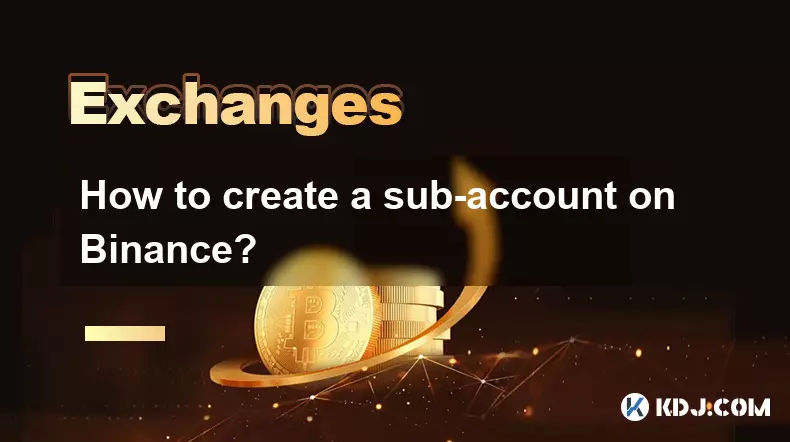
How to create a sub-account on Binance?
Sep 01,2025 at 12:36am
Accessing the Binance Sub-Account Feature1. Log in to your Binance account using your registered email and password. Ensure that two-factor authentica...
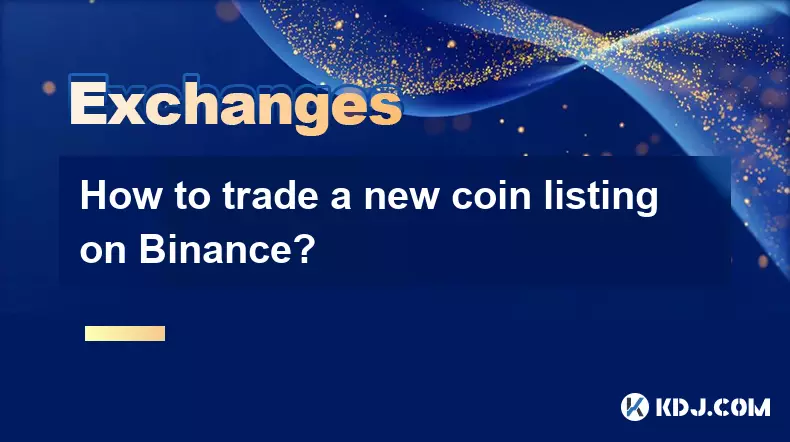
How to trade a new coin listing on Binance?
Aug 29,2025 at 11:14am
Understanding the Pre-Listing Phase1. Research the project thoroughly before any listing announcement. Whitepapers, team backgrounds, and community se...
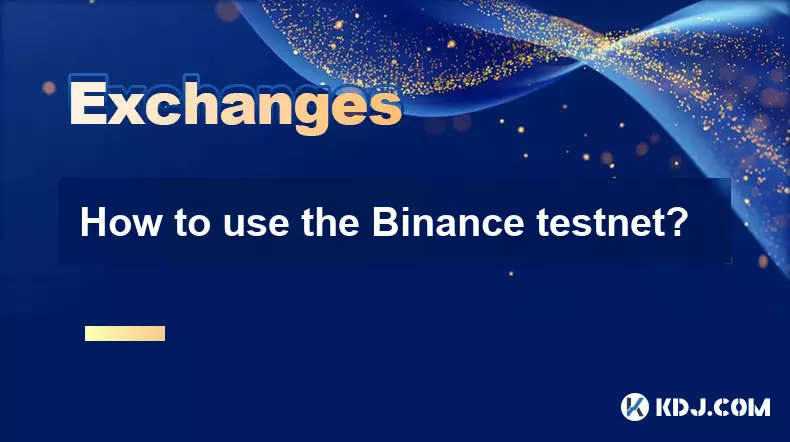
How to use the Binance testnet?
Aug 31,2025 at 02:19am
Understanding the Binance Testnet Environment1. The Binance testnet is a simulated version of the Binance Smart Chain (BSC) that allows developers and...
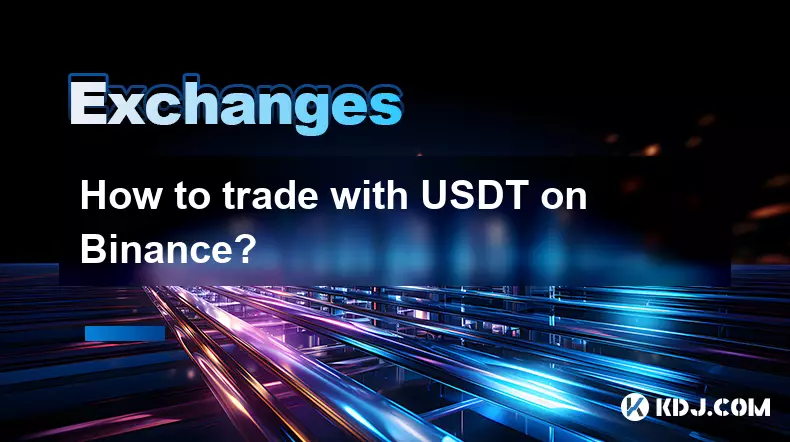
How to trade with USDT on Binance?
Aug 30,2025 at 02:19am
Getting Started with USDT Trading on Binance1. Create and verify your Binance account. Visit the official Binance website and complete the registratio...
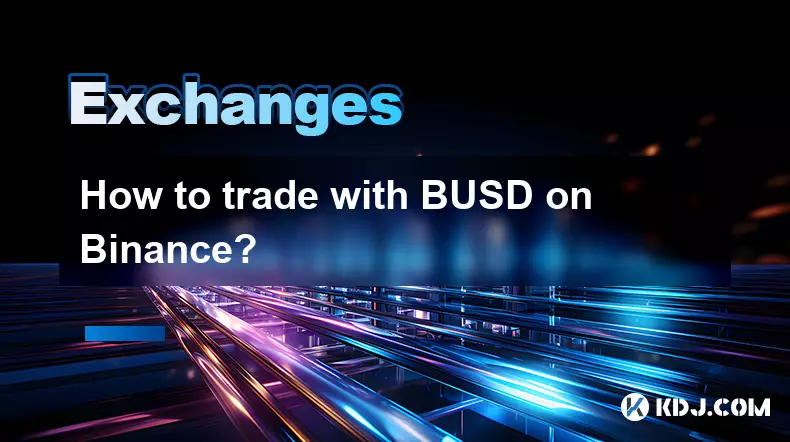
How to trade with BUSD on Binance?
Aug 30,2025 at 07:42am
Understanding BUSD and Its Role in Binance Trading1. BUSD, or Binance USD, is a stablecoin pegged to the value of the U.S. dollar, meaning 1 BUSD is a...
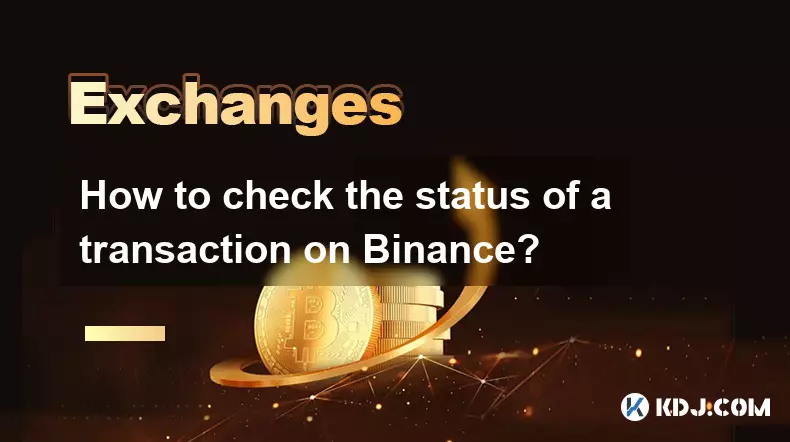
How to check the status of a transaction on Binance?
Sep 01,2025 at 01:18am
Understanding Transaction Status on Binance1. Log in to your Binance account through the official website or mobile application. Navigate to the 'Wall...

How to create a sub-account on Binance?
Sep 01,2025 at 12:36am
Accessing the Binance Sub-Account Feature1. Log in to your Binance account using your registered email and password. Ensure that two-factor authentica...

How to trade a new coin listing on Binance?
Aug 29,2025 at 11:14am
Understanding the Pre-Listing Phase1. Research the project thoroughly before any listing announcement. Whitepapers, team backgrounds, and community se...

How to use the Binance testnet?
Aug 31,2025 at 02:19am
Understanding the Binance Testnet Environment1. The Binance testnet is a simulated version of the Binance Smart Chain (BSC) that allows developers and...

How to trade with USDT on Binance?
Aug 30,2025 at 02:19am
Getting Started with USDT Trading on Binance1. Create and verify your Binance account. Visit the official Binance website and complete the registratio...

How to trade with BUSD on Binance?
Aug 30,2025 at 07:42am
Understanding BUSD and Its Role in Binance Trading1. BUSD, or Binance USD, is a stablecoin pegged to the value of the U.S. dollar, meaning 1 BUSD is a...

How to check the status of a transaction on Binance?
Sep 01,2025 at 01:18am
Understanding Transaction Status on Binance1. Log in to your Binance account through the official website or mobile application. Navigate to the 'Wall...
See all articles

























































































